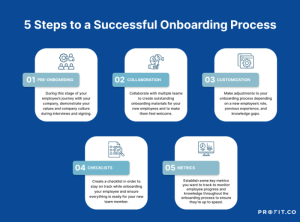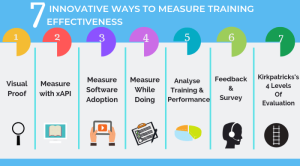
Scaling a business requires strategic financial planning. This guide explores diverse avenues for funding corporate growth, from leveraging internal resources like retained earnings and optimized cash flow to securing external funding through debt, equity, or government initiatives. We’ll examine the intricacies of each approach, offering insights into successful strategies and potential pitfalls.
Understanding the nuances of different funding models—including bank loans, venture capital, crowdfunding, and strategic partnerships—is crucial for sustainable expansion. This comprehensive overview will equip you with the knowledge to make informed decisions and chart a course towards robust and responsible corporate growth.
Internal Funding Strategies for Corporate Growth
Internal funding, leveraging a company’s existing resources, offers a powerful pathway to corporate expansion without the complexities and potential dilution associated with external financing. This approach allows for greater control and avoids the pressures of investor expectations. Effective internal funding hinges on strategic resource management and creative financial planning.
Retained Earnings for Expansion
Retained earnings, the accumulated profits reinvested into the business, form the cornerstone of many internal growth strategies. These funds can be allocated to various expansion initiatives, minimizing reliance on external debt or equity. The allocation strategy should align with the company’s overall growth objectives. For instance, a portion might be dedicated to research and development for new products, another to upgrading existing infrastructure, and a further portion to marketing and sales expansion into new territories.
A well-defined allocation plan, reviewed regularly, ensures efficient capital deployment.
Optimizing Cash Flow for Growth Initiatives
Effective cash flow management is crucial for fueling growth. This involves implementing strategies to accelerate cash inflows and carefully managing outflows. Strategies include improving inventory management to reduce storage costs and optimize order fulfillment, implementing efficient accounts receivable processes to shorten payment cycles, and negotiating favorable payment terms with suppliers. A detailed cash flow projection, considering both short-term and long-term needs, allows for proactive planning and adjustment.
For example, a company anticipating a significant increase in production might secure pre-orders to ensure sufficient cash flow to cover the increased investment in materials and labor.
Leveraging Existing Assets for Capital Generation
Companies often possess underutilized assets that can be leveraged to generate additional capital. This could involve leasing out idle equipment or property, generating revenue streams without requiring significant capital investment. Another strategy involves selling off non-core assets, freeing up capital for reinvestment in core business areas. For instance, a manufacturing company might lease out unused warehouse space, generating rental income that contributes to expansion plans.
A thorough assessment of existing assets, identifying those with potential for revenue generation or sale, is essential for effective capital generation.
Examples of Successful Internal Financing Strategies
Many companies have successfully utilized internal financing for growth. For example, reinvesting profits in research and development has been a cornerstone of tech giants like Apple and Google, fueling their continuous innovation and market leadership. Similarly, companies in the retail sector often use retained earnings to expand their store network or enhance their online presence. In the manufacturing sector, internal financing might be used to upgrade production lines, boosting efficiency and output.
These examples demonstrate the versatility and effectiveness of internal funding strategies across diverse industries, emphasizing the importance of aligning internal funding with the specific needs and growth trajectory of the business.
External Funding Sources for Corporate Growth

Securing adequate funding is crucial for corporate growth. While internal resources can provide a foundation, external funding sources often play a vital role in fueling expansion, innovation, and market penetration. This section explores the key external options available to growing companies, highlighting their advantages and disadvantages.
Debt Financing versus Equity Financing
Debt financing and equity financing represent two fundamentally different approaches to securing external capital. Debt financing involves borrowing money that must be repaid with interest, leaving the ownership structure unchanged. Examples include bank loans and corporate bonds. Equity financing, conversely, involves selling a portion of the company’s ownership in exchange for capital. This dilutes the existing ownership but avoids the obligation of repayment.
Venture capital and Initial Public Offerings (IPOs) are prime examples of equity financing. A key difference lies in the risk profile: debt financing carries a fixed repayment schedule and interest burden, while equity financing shares the company’s potential profits and losses with investors. The choice depends on factors like the company’s risk tolerance, financial health, and long-term growth strategy.
Successful Crowdfunding Campaigns for Corporate Growth
Crowdfunding platforms offer an alternative avenue for securing funding, particularly for innovative or socially responsible ventures. Successful campaigns often leverage compelling narratives, clear value propositions, and robust marketing strategies to attract a broad base of investors. For example, the Pebble smartwatch raised millions through Kickstarter, showcasing the power of crowdfunding to launch new products and build brand awareness.
Similarly, Exploding Kittens, a card game, achieved phenomenal success on Kickstarter, demonstrating the potential for crowdfunding to fuel rapid growth and market penetration. These campaigns highlight the importance of engaging with potential backers, providing regular updates, and delivering on promises to build trust and secure further funding rounds.
Securing a Bank Loan for Business Expansion
Obtaining a bank loan for business expansion requires a well-structured application process. Banks assess the creditworthiness of the borrower, the viability of the business plan, and the potential for repayment. A strong business plan, demonstrating market demand, competitive advantage, and financial projections, is essential. The applicant should also have a solid credit history, sufficient collateral, and a demonstrable track record of success.
Banks typically require detailed financial statements, including income statements, balance sheets, and cash flow projections. The loan application process often involves multiple stages, including initial consultation, formal application submission, credit assessment, and negotiation of loan terms. A strong relationship with a bank and a clear understanding of the bank’s lending criteria can significantly improve the chances of securing a loan.
Key Investor Considerations in Evaluating Investment Opportunities
Investors carefully evaluate several key factors when considering investment opportunities in growing companies. These factors include the company’s market opportunity, competitive landscape, management team, financial projections, and risk profile. A strong management team with a proven track record is highly valued. Investors also scrutinize the company’s financial statements, looking for evidence of sustainable growth, profitability, and strong cash flow.
The size of the addressable market, the company’s competitive advantage, and its ability to scale operations are also crucial considerations. Ultimately, investors seek investments with a high potential for return on investment while balancing the level of risk involved. A thorough due diligence process, involving financial analysis, market research, and management interviews, is essential to making informed investment decisions.
Government Grants and Incentives for Corporate Growth
Securing government funding can significantly boost corporate growth, providing crucial capital for expansion, research and development, or job creation. Government agencies at local, regional, and national levels offer a variety of grants and tax incentives designed to stimulate economic activity and support specific industries. Understanding these opportunities and navigating the application process effectively can be a game-changer for businesses.Government grants and tax incentives vary widely depending on geographic location, industry, and the specific goals of the funding program.
For instance, regions experiencing economic downturn may offer more generous incentives to attract businesses, while programs focused on renewable energy or technological innovation might target specific sectors. Similarly, tax breaks can range from deductions for research and development expenses to credits for hiring new employees or investing in energy-efficient technologies. The availability of these resources is constantly evolving, requiring businesses to proactively research and monitor relevant programs.
Resources for Finding Government Funding Programs
Finding suitable government funding programs requires diligent research. Several resources can streamline this process. First, the Small Business Administration (SBA) website offers a comprehensive database of federal grants and loan programs for small businesses. Many state and local governments also maintain online portals listing available funding opportunities within their jurisdictions. Additionally, industry-specific associations and chambers of commerce often provide information on relevant grants and incentives targeted at their members.
Finally, consulting with a business advisor or grant writer can prove invaluable in identifying and securing appropriate funding.
Navigating the Government Funding Application Process
The application process for government grants typically involves several steps. First, careful review of eligibility criteria is paramount. Many programs have specific requirements regarding business size, industry, location, and project scope. Second, a well-crafted proposal is crucial, highlighting the project’s potential impact, financial feasibility, and alignment with the program’s goals. This proposal often includes a detailed budget, timeline, and evaluation metrics.
Third, applicants should meticulously follow all instructions and deadlines Artikeld in the application guidelines. Incomplete or late submissions often lead to disqualification. Finally, thorough record-keeping throughout the process is essential for demonstrating compliance and managing the funds effectively if the grant is awarded.
Examples of Successful Companies Leveraging Government Support
Numerous companies have successfully leveraged government support to fuel their growth. For example, Tesla received significant government incentives, including tax credits and grants, to support its electric vehicle production and battery technology development. These incentives helped Tesla establish itself as a leader in the electric vehicle market. Similarly, many biotechnology companies have relied on government grants for research and development, enabling them to bring innovative therapies and treatments to market.
These examples underscore the potential impact of government funding on corporate growth and innovation.
Strategic Partnerships and Mergers & Acquisitions for Corporate Growth
Strategic partnerships and mergers & acquisitions (M&A) represent powerful avenues for accelerating corporate growth. Both strategies offer access to new markets, technologies, and talent, but they differ significantly in their implementation, risk profiles, and long-term implications. Understanding these differences is crucial for selecting the optimal growth strategy for a given company.Strategic partnerships involve collaborations between two or more independent companies to achieve shared objectives.
Mergers and acquisitions, conversely, involve the consolidation of two or more entities into a single legal entity. This section will explore the advantages and disadvantages of each, offering guidance on identifying and evaluating potential partners and acquisition targets.
Advantages and Disadvantages of Strategic Partnerships versus Mergers & Acquisitions
Strategic partnerships offer a less disruptive and less capital-intensive path to growth than M&A. They allow companies to leverage each other’s strengths without relinquishing control or integrating complex operations. However, partnerships require careful management of shared resources and potential conflicts of interest. M&A, while offering greater control and integration of resources, involves significantly higher financial investment, greater operational complexity, and a higher risk of integration failures.
Successful integration requires careful planning, cultural alignment, and efficient management of change.
Identifying and Evaluating Potential Partners or Acquisition Targets
Identifying suitable partners or acquisition targets necessitates a thorough understanding of the company’s strategic goals and a rigorous evaluation process. This involves analyzing potential partners’ or targets’ financial performance, market position, competitive landscape, and management capabilities. A SWOT analysis (Strengths, Weaknesses, Opportunities, Threats) for both the company and the potential partner/target is invaluable. Furthermore, assessing cultural compatibility is crucial for successful integration, especially in the case of M&A.
Financial modeling should project potential synergies and returns on investment, providing a quantitative basis for decision-making. The evaluation should also consider potential regulatory hurdles and antitrust concerns.
Due Diligence Checklist for Evaluating Potential Strategic Partnerships
A robust due diligence process is essential for mitigating risks associated with strategic partnerships. The following checklist provides a framework for evaluating potential partners:
- Strategic Alignment: Assess the compatibility of the partner’s strategic goals with the company’s objectives.
- Financial Stability: Analyze the partner’s financial health, including revenue streams, profitability, and debt levels.
- Operational Capabilities: Evaluate the partner’s operational efficiency and technological capabilities.
- Legal and Regulatory Compliance: Review the partner’s compliance with relevant laws and regulations.
- Intellectual Property: Assess the partner’s intellectual property portfolio and protection strategies.
- Management Team: Evaluate the partner’s management team’s experience and expertise.
- Cultural Compatibility: Assess the compatibility of the partner’s corporate culture with the company’s culture.
- Exit Strategy: Develop a clear plan for terminating the partnership if necessary.
Case Studies of Successful Mergers and Acquisitions
Numerous successful mergers and acquisitions have demonstrated the potential for significant corporate growth. For example, the acquisition of Instagram by Facebook (now Meta) significantly expanded Facebook’s user base and market reach, enhancing its position in the social media landscape. Similarly, Disney’s acquisition of Pixar Animation Studios expanded its portfolio of intellectual property and creative talent, leading to increased revenue and market dominance in the animation industry.
These examples highlight the potential for strategic acquisitions to drive substantial growth, provided they are carefully planned and executed. However, it is important to note that not all mergers and acquisitions are successful. Careful due diligence and integration planning are crucial for maximizing the chances of success.
Measuring and Evaluating Corporate Growth

Effectively measuring and evaluating corporate growth is crucial for understanding the success of implemented strategies and making data-driven decisions for future initiatives. This involves tracking key performance indicators (KPIs), analyzing financial statements, and visualizing progress through dashboards. Ultimately, the goal is to demonstrate a clear return on investment (ROI) for growth-related expenditures.
Key Performance Indicators (KPIs) for Tracking Corporate Growth
Several KPIs provide a comprehensive view of corporate growth. These metrics offer insights into various aspects of a company’s performance, allowing for a holistic assessment of progress. Choosing the right KPIs depends on the specific goals and the nature of the business.
- Revenue Growth: This measures the percentage increase in revenue over a specific period. A consistent upward trend indicates healthy growth. For example, a company with $10 million in revenue last year and $12 million this year shows a 20% revenue growth rate.
- Market Share: This KPI indicates the percentage of the total market controlled by a company. Increasing market share signifies success in gaining competitive advantage. A company increasing its market share from 10% to 15% demonstrates strong growth within its industry.
- Customer Acquisition Cost (CAC): This measures the cost of acquiring a new customer. A lower CAC indicates efficient marketing and sales strategies. If a company reduces its CAC from $500 to $400 per customer, it signifies improved efficiency.
- Customer Lifetime Value (CLTV): This represents the total revenue a company expects to generate from a single customer over their entire relationship. A high CLTV indicates customer loyalty and retention. A company with a CLTV of $5000 per customer has a strong customer base.
- Employee Growth: In many cases, a growing company also experiences an increase in its workforce. Tracking employee growth can indicate the expansion of operations and increased capacity.
Analyzing Financial Statements to Assess Growth Strategy Effectiveness
Financial statements, including the income statement, balance sheet, and cash flow statement, are essential tools for evaluating the effectiveness of growth strategies. By analyzing these statements, companies can identify areas of strength and weakness and make informed decisions to optimize their growth trajectory.Analyzing the income statement reveals trends in revenue, cost of goods sold, and profitability. A comparison of these figures year-over-year or against industry benchmarks provides insights into the success of growth initiatives.
The balance sheet provides information on assets, liabilities, and equity, offering a snapshot of the company’s financial health. Analyzing changes in these items can highlight the impact of growth strategies on the company’s overall financial position. Finally, the cash flow statement shows the movement of cash in and out of the business, indicating the liquidity position and the ability to fund future growth.
Designing a Dashboard for Visualizing Key Metrics
A well-designed dashboard provides a clear and concise overview of key corporate growth metrics. It should visually represent the most important KPIs, allowing for easy monitoring and identification of trends. Consider using charts, graphs, and other visual aids to represent data effectively. A sample dashboard might include charts displaying revenue growth, market share, CAC, CLTV, and employee growth over time.
Key thresholds or targets can be visually highlighted to instantly identify areas requiring attention. For example, a color-coded system could highlight revenue growth above a specific target in green, and below in red.
Monitoring and Evaluating the Return on Investment (ROI) of Growth Initiatives
Measuring the ROI of growth initiatives is critical to ensure that investments are yielding the expected results. This involves tracking both the costs associated with growth initiatives and the resulting increase in revenue or other relevant metrics. A simple ROI calculation is: (Net Profit from Growth Initiative / Cost of Growth Initiative) x 100%. For instance, if a marketing campaign costing $10,000 generates an additional $25,000 in revenue and $10,000 in profit, the ROI is 100%.
Regular monitoring and evaluation of ROI allow for adjustments to growth strategies as needed, ensuring optimal resource allocation and maximizing returns.
Successfully navigating corporate growth requires a multifaceted approach to funding. By carefully considering internal resources, external investments, government support, and strategic alliances, businesses can secure the capital needed to achieve ambitious expansion goals. This guide has provided a framework for understanding these diverse options, enabling informed decision-making and fostering sustainable, profitable growth.
User Queries
What are the risks associated with debt financing?
High levels of debt can increase financial risk, particularly during economic downturns. Failure to meet debt obligations can lead to bankruptcy. Careful consideration of debt-to-equity ratios and interest rates is essential.
How can I improve my chances of securing a bank loan?
A strong business plan, positive cash flow history, and a low debt-to-equity ratio significantly improve loan approval chances. Banks also assess credit scores and the overall financial health of the business.
What are some non-financial factors investors consider?
Investors assess management team experience, market opportunity, competitive landscape, and the overall business model’s scalability and sustainability, in addition to financial projections.




